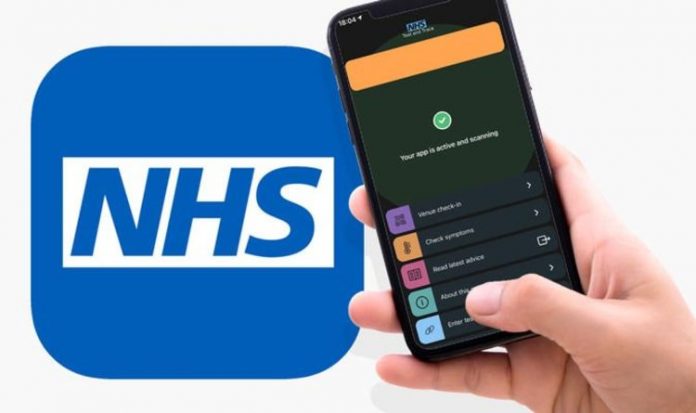A crucial fix has been rolled out to the NHS COVID-19 app, which prevents a number of worrying messages that appeared to warn Android and iPhone users about a possible exposure to someone infected with coronavirus. Tapping on the notification would load the app, but not reveal any further information about the “possible exposure”. Users flooded social media to complain about the message – unsure whether they needed to self-isolate, whether they should try to get a test, or whether it was safe to continue to leave the house for work, shopping or anything else.
The alerts have been plaguing users since the UK Department for Health launched the long-delayed application to smartphone owners in England and Wales. However, in the last few days, an update for the app has started to roll-out which prevents the issue and clears-up any confusion.
The UK Department for Health highlights the fix in the listing on the App Store, stating that the latest version of the app, dubbed NHS COVID-19, now includes “better notification for potential exposures”. So, what has changed? Well, the original notification that caused the initial panic from users still remains. For those who haven’t seen it, the notification – which is present on both iOS and Android versions of the app, reads: “Possible Covid-19 exposure. Verifying exposure info. The app has accessed the date, duration and signal strength of this exposure.”
However, the smartphone app will now send a second notification designed to clarify the first message. It reads: “Don’t worry, we have assessed your risk and there is no need to take action at this time. Please continue to stay alert and follow the latest advice on social distancing.” That should allay the fears of those who assumed the first message from the app was a sign that they’d been at risk of infection and needed to take action.
Officials claim the first notification – which mentions a “possible Covid-19 exposure” – is a default message that is present on all apps that leverage the system developed by Google and Apple. The rival technology companies have collaborated on a system that uses Bluetooth to keep tabs on the smartphones that have passed within close proximity to you when out-and-about. Since it has the blessing of Apple and Google, it allows iPhones to track the movements of Android smartphones and vice versa.
MORE LIKE THIS
EE has extended its free unlimited data offer for NHS staff and care workers
According to officials, the notification is designed to remind you that the system is working as expected. Apple and Google haven’t offered more details about these notifications, how often users should expect to see them, and whether they will be phased out in a future version of the contact-tracing system.
If your NHS COVID-19 app does detect that you’ve been in close-contact with someone who has since tested positive for the virus and you need to self-isolate, the smartphone app will specifically spell that out to you. Not only that, but unlike the “default messages” mentioned above, tapping on the notification will load detailed instructions about your next steps within the NHS app – something that doesn’t happen with the “possible Covid-19 exposure” message.
The NHS COVID-19 app uses Bluetooth to track time and distances between smartphones. If someone who has been in close contact with you for a prolonged period of time tests positive, your smartphone app will let you know that you might be at risk. The team behind the app has created a “risk-scoring algorithm” designed to work out whether there’s a reasonable chance that you might’ve picked up the virus. There’s not much detail about how exactly the risk-scoring algorithm works, however, it’s clear that prolonged contact with someone who has the virus increases the risk of transmission. Other factors – like whether you’re indoors, or in a park – could also determine the likeliness that you’ll contract COVID-19.
The NHS COVID-19 app will also display important messages about your health when you open the app. If the message doesn’t appear when tapping on the notification, chances are, you’ve just experienced on these “default messages” and don’t need to take any further action.
If NHS determines that you need to self-isolate because of a high risk of exposure, it says that the NHS COVID-19 app will send you an alert that states how long you’ll need to self-isolate. It will state that it has “detected that you have been in contact with someone who has coronavirus. Please stay at home and self-isolate to keep yourself and others safe”. Not only that, the app will provide a countdown timer. “When you reach the end of your self-isolation period, you will receive a notification with a link to the latest advice for you,” it clarified on Twitter following the confusion.
Apple and Google’s cross-platform solution is designed to preserve users’ privacy – while still allowing Android and iOS-powered smartphones to keep tabs on who you’ve been close to. The so-called Exposure Notification API uses Bluetooth Low Energy to determine whether – at some point during the last two weeks – you’ve passed someone who later tests positive for the novel coronavirus. All of this happens anonymously to restrict the amount of health and location data stored on iPhone and Android owners.




